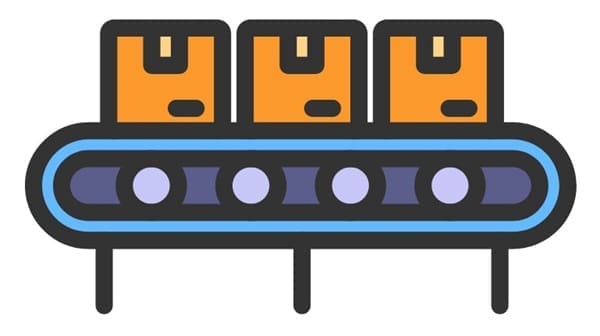Line Balancing (LB) increases efficiency and throughput while simultaneously decreasing manpower and costs in production lines.
An efficient line includes distributing work equally among each workstation, minimizing both the number of stations and idle time for any output level. This makes LB an efficient approach, involving assigning tasks across a series of connected workstations.
Table of contents
Definition of Line Balancing
Line balancing in manufacturing involves aligning operator and machine times with customer demand (known as “takt time”). If production times align perfectly with customer needs (known as “takt time”), then the line is balanced; otherwise, we should adjust resources to remove bottlenecks in production lines and free up bottlenecks in resources.
For optimal line balancing, create workstations designed for efficient material flow, calculate cycle times, and identify any bottlenecks or bottlenecking in production rates. Next, reallocate resources accordingly to optimize production rates. Modern technologies and Lean practices may assist with data collection and process improvement.

Benefits of Line Balancing
- Reduced idle time
- Smoother flow
- Improved quality products
- Increased productivity.
Concept of Assembly Line Balancing
Organizing production lines involves balancing task times at each workstation to ensure smooth flow from one workstation to the next, thereby reducing delays and overburdening any one employee, and helping eliminate bottlenecks.
Terminology for Line Balancing
Minimum Rational Work Element
A job comprises the smallest practical indivisible tasks that cannot be further subdivided. Examples include drilling a hole or installing a screw and nut. We denote it as “Tej,” where “j” identifies the specific element out of the total work elements.
Total Work Content
The line requires completion of all work elements. We can calculate it as the sum of individual work elements: Twc = ΣTej.
Workstation Process Time
The time taken to perform work at each station, either manually or using automatic devices. We denote it as “Tsi,” indicating the process time at the station “i” of an “n” station line. We calculate iit as the sum of individual work elements at each station: Tsi = Σej.
Cycle Time
The ideal or theoretical time interval between parts coming off the line. Efficiency (E) considerations require reducing the ideal cycle time.
Formula: Tc ≤ E / Rp, where Rp is the production rate.
The bottleneck station with the largest Ts value determines the minimum possible cycle time.
Constraints: Tc ≥ max(Tsi), Tc ≥ Tej.
Precedence Constraints
Limitations on the order in which work elements can be accomplished due to technological sequencing requirements.
Precedence Diagram
A graphical representation of the sequence of work elements based on precedence constraints.
Balance Delay (Balancing Loss)
A measure of line inefficiency resulting from idle time due to imperfect work allocation among stations. We calculate it as the difference between the cycle time and the sum of individual workstation process times: c – Σwc.
Example: Work E
Final Words
Businesses use lean business techniques (LB) to improve productivity, decrease idle time and manpower costs, and produce multiple products simultaneously. For instance, one worker could potentially operate two or more machines simultaneously using lean principles.
Its goals include minimizing workstations while decreasing cycle times while improving workload smoothness as well as making sure all tasks related to each other and are organized seamlessly.


















